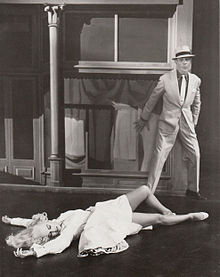
Fred Astaire was an American dancer, actor, singer, musician, choreographer, and presenter. He is widely regarded as the "greatest popular-music dancer of all time". He received numerous accolades including an Honorary Academy Award, three Primetime Emmy Awards, a BAFTA Award, two Golden Globe Awards, and a Grammy Award. He was honored with the Film Society of Lincoln Center tribute in 1973, the Kennedy Center Honors in 1978, and AFI Life Achievement Award in 1980. He was inducted into the Hollywood Walk of Fame in 1960, American Theatre Hall of Fame in 1972, and the Television Hall of Fame in 1989.

Adolph Green was an American lyricist and playwright who, with long-time collaborator Betty Comden, penned the screenplays and songs for musicals on Broadway and in Hollywood. Although they were not a romantic couple, they shared a unique comic genius and sophisticated wit that enabled them to forge a six-decade-long partnership. They received numerous accolades including four Tony Awards and nominations for two Academy Awards and a Grammy Award. Green was inducted into the Songwriters Hall of Fame in 1980 and American Theatre Hall of Fame in 1981. Comden and Green received the Kennedy Center Honor in 1991.
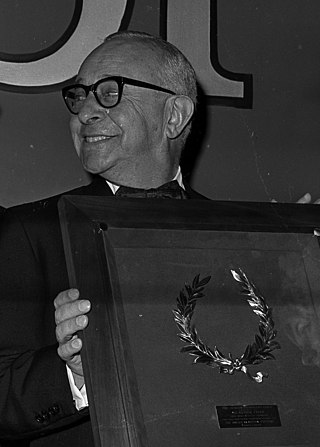
Arthur Freed was an American lyricist and a Hollywood film producer. He won the Academy Award for Best Picture twice, in 1951 for An American in Paris and in 1958 for Gigi. Both films were musicals, and both were directed by Vincente Minnelli. In addition, he produced the film Singin' in the Rain, the soundtrack for which primarily consisted of songs he co-wrote earlier in his career.

Vincente Minnelli was an American stage director and film director. For a career nearly spanning almost five decades, he is best known for his sophisticated innovation and artistry in musical films. As of 2024, six of his films have been selected for preservation in the United States National Film Registry.
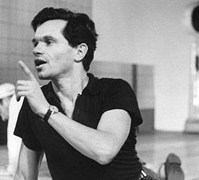
Michael Kidd was an American film and stage choreographer, dancer and actor, whose career spanned five decades, and who staged some of the leading Broadway and film musicals of the 1940s and 1950s. Kidd, strongly influenced by Charlie Chaplin and Léonide Massine, was an innovator in what came to be known as the "integrated musical", in which dance movements are integral to the plot.

Cyd Charisse was an American dancer and actress.

Arthur Schwartz was an American composer and film producer, widely noted for his songwriting collaborations with Howard Dietz.

Howard Dietz was an American publicist, lyricist, and librettist, best remembered for his songwriting collaboration with Arthur Schwartz.

That's Entertainment! is a 1974 American compilation film released by Metro-Goldwyn-Mayer to celebrate the studio's 50th anniversary. The success of the retrospective prompted a 1976 sequel, the related 1985 film That's Dancing!, and a third installment in 1994.

A dream ballet, in musical theater, is an all-dance, no-singing production number that reflects the themes of the production. The plot, themes, and characters are typically the same—although the people playing the characters may be different, as the roles of the dream ballet are usually filled by well-trained dancers rather than actual actors.

On Your Toes (1936) is a musical with a book by Richard Rodgers, George Abbott, and Lorenz Hart, music by Rodgers, and lyrics by Hart. It was adapted into a film in 1939.
"That's Entertainment!" is a popular song with music written by Arthur Schwartz and lyrics by Howard Dietz. The song was published in 1952 and was written especially for the 1953 Metro-Goldwyn-Mayer musical film The Band Wagon. The song is performed in the film by Jack Buchanan supported by Fred Astaire, Nanette Fabray, and Oscar Levant.

Ziegfeld Follies is a 1945 American musical comedy film released by Metro-Goldwyn-Mayer, primarily directed by Vincente Minnelli, with segments directed by Lemuel Ayers, Roy Del Ruth, Robert Lewis, and George Sidney, the film's original director before Minnelli took over. Other directors that are claimed to have made uncredited contributions to the film are Merrill Pye, Norman Taurog, and Charles Walters. It stars many MGM leading talents, including Fred Astaire, Lucille Ball, Lucille Bremer, Fanny Brice, Judy Garland, Kathryn Grayson, Lena Horne, Gene Kelly, James Melton, Victor Moore, William Powell, Red Skelton, and Esther Williams.

This is a comprehensive guide to over one hundred and fifty of Fred Astaire's solo and partnered dances compiled from his thirty-one Hollywood musical comedy films produced between 1933 and 1968, his four television specials and his television appearances on The Hollywood Palace and Bob Hope Presents the Chrysler Theatre which cover the period from 1958 to 1968. Further information on the dance routines may be obtained, where available, by clicking on the film links.
"Dancing in the Dark" is a popular American song, with music by Arthur Schwartz and lyrics by Howard Dietz, that was introduced by John Barker with Tilly Losch dancing in the 1931 revue The Band Wagon. The song was first recorded by Bing Crosby on August 19, 1931 with Studio Orchestra directed by Victor Young, staying on the pop charts for six weeks, peaking at #3, and helping to make it a lasting standard.
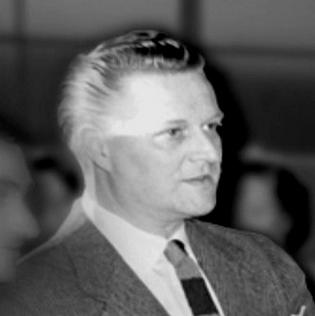
Robert Alton was an American dancer and choreographer, a major figure in dance choreography of Broadway and Hollywood musicals from the 1930s through to the early 1950s. He is principally remembered today as the discoverer of Gene Kelly, for his collaborations with Fred Astaire, and for choreographic sequences he designed for Hollywood musicals such as The Harvey Girls (1946), Till the Clouds Roll By (1946), Show Boat (1951), and White Christmas (1954).
"I Guess I'll Have to Change My Plan" is a popular song published in 1929, with music by Arthur Schwartz and lyrics by Howard Dietz.

Silk Stockings is a 1957 American musical romantic comedy film directed by Rouben Mamoulian and starring Fred Astaire and Cyd Charisse. It is based on the 1955 stage musical of the same name, which had been adapted from the film Ninotchka (1939). The film was choreographed by Eugene Loring and Hermes Pan.
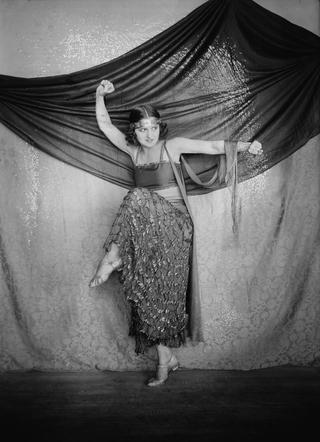
Albertina Rasch was an Austrian-American dancer, company director, and choreographer.

The Band Wagon is a musical revue with book by George S. Kaufman and Howard Dietz, lyrics also by Dietz and music by Arthur Schwartz. It first played on Broadway in 1931, running for 260 performances. It introduced the song "Dancing in the Dark" and inspired two films.


